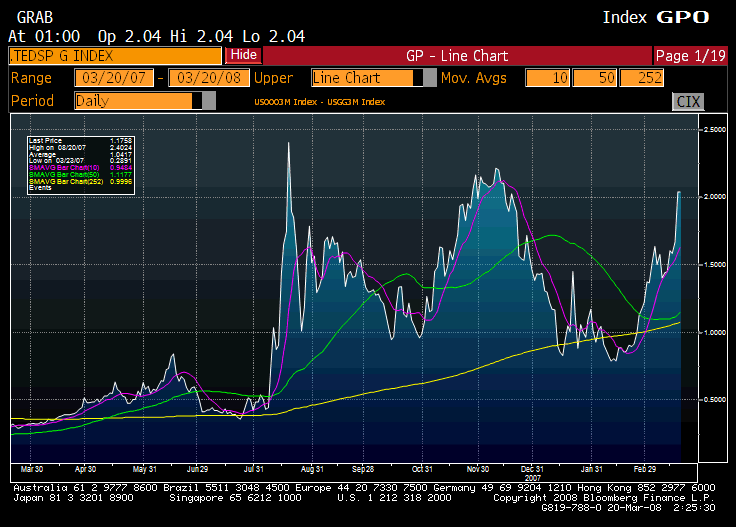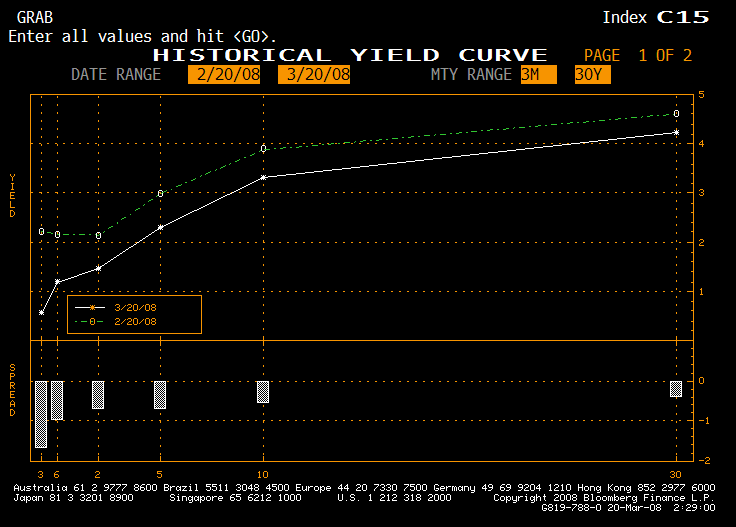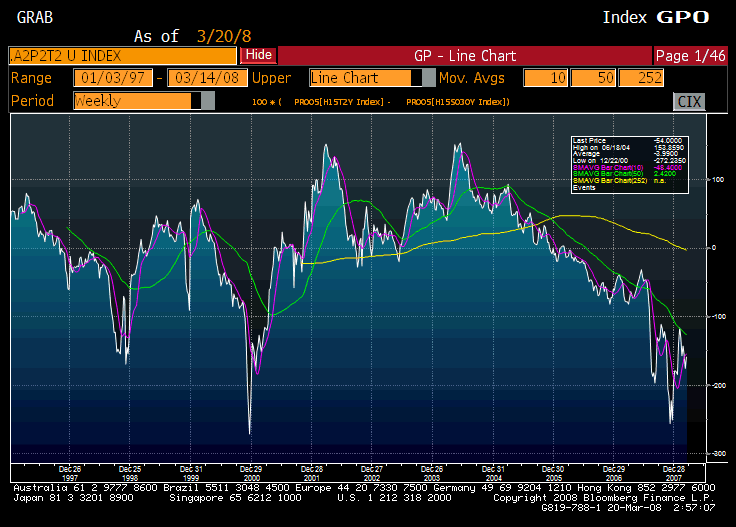Fifteen Notes on the Credit Markets (and other markets)
1)? A number of blogs pointed to this piece by Howard Marks of Oaktree, and I thought it was very well-thought out for the most part.? There are few people who think about history in the markets; they just follow present trends.? Learning how to see unsustainable trends and avoiding them not only reduces risk, but enhances long-term return.
2) Crisis!? Choose how you want to view it:
- The SEC is inadequate for the task of regulating investment banks.
- The TED spread is high, and A2/P2 CP rates are high compared to AA short-term spreads.
- US T-bill rates are below those of Japan.
- There is a flight to safety going on in the money markets, leading to hoarding of Treasuries, repo fails, and negative repo rates.
- High yield spreads are challenging prior high spread levels.
- America is starting to pay a premium for borrowing in the US dollar LIBOR market, as compared to yen.
3) Tony Crescenzi sounds an optimistic note on the short-term lending markets.? His opinion should be taken seriously.? The money markets are a specialty of his.
4) To err is human, but to really mess things up, you need derivatives.? With Bear Stearns, different parties have different incentives regarding the firm.? Senior bondholders and derivative counterparties owed money by Bear are much, much larger than the teensy equity base of the small-cap firm.? It is my guess that they are protecting their interests by buying stock at prices over the terms of the deal.? They want the deal to go through.
5) How are the European investment banks?? My guess is that they have greater accounting flexibility, and things are better than US investment banks, but worse than currently illustrated.
6) Save our markets by risking our national credit?? I’m skeptical of many government solutions that bail out the markets, including those the Fed is pursuing.? Same for the GSEs… it seems like a free lunch to allow the GSEs to lever up further, but the losses are growing at Fannie and Freddie from all of the guarantees that they have written.? The US government backstops the whole thing implicitly, but even the capacity of the US government to fund these bailout schemes is limited.? Calling Fitch! — you often have more guts (or less to lose) than S&P and Moody’s.? Let’s have a shot across the bow, and downgrade the US to AA+.
7) Are mortgage rates finally falling?? I guess if the expectations of Fed policy get low enough, it will overcome the increase in swaption volatility.? Then again, PIMCO, Fannie, Freddie, and many others are buying prime mortgage paper again.
8 ) Thornburg, alas.? Dilution and more dilution, in order to survive.? (That could be the fate of many financial and mortgage insurers.)? Misfinancing in the midst of a crisis gives way to a need for equity that kills existing shareholders.
9) In terms of actual losses, Commercial Real Estate lending is not in as bad of a shape as residential lending.? That said, it’s not in great shape and the market is slowing dramatically.? What lending market is in good shape today? 🙁 We overlevered every debt market that we could…
10) When actual stock price volatility gets high, that is typically a sign of a bear market.? When it actual volatility peaks, that is often a sign of an intermediate term bottom.
11) Finally, an article on ETNs that mentions credit risk, if briefly.? Be wary of ETNs, they are obligations of investment banks, most of which have high credit spreads that you are not being compensated for in the ETNs.
12) Give the guys at Dexia some credit for being opportunistic during the crisis of financial guarantors… they had the balance sheet, conservative posture, and the team ready to take advantage of the dislocation in their subsidiary FSA.
13) Someone tell me otherwise if I am wrong, but I am not worried about the assets in my brokerage account.? In a crisis, there is SIPC and excess insurance.? Brokerages are prohibited from commingling client assets, and even if their are delivery failures from securities lending, those issues are solvable, given time and the insurance.
14) I worry about inflation in the US, because it is a global problem.? As the dollar declines, it slows foreign economies because they can’t export as much, and it raises prices here because imports cost more.
15)? This is an article that is just too early.? So the markets have rallied, and commodities have fallen?? It’s only one week, and that is no horizon over which to make the judgment that Fed policy is succeeding.? Look at it in 9-12 months, and then maybe we can hazard a good guess.









